- Overview
- Full Itinerary
- Photo Gallery
- Costing
- Travel Details
- Trip Reports
- Guides
- Map
- Know Before You Go
- Other Trips You May Like
Few places in the U.S. offer the remarkable combination of scenery, biological diversity, and experience like the sky island mountain ranges of Southeastern Arizona. These ranges rise from deserts and grasslands; the elevation changes afford rich biodiversity, rare in such a small geographic area.
This tour coincides with spring migration, which peaks from late April through mid-May. Spectacular residents like Elegant Trogon, Red-faced Warbler, and Sulphur-bellied Flycatcher range north here from Mexico and Central America. They arrive keen to set up breeding in this almost subtropical realm. On cool, shaded trails, walk between yucca, tall pines, and a host of plants more commonly seen on the Mexican plateau.
Begin with a scenic drive from Tucson, Arizona, to the southeast corner of the state, exploring the remarkable Amerind Foundation Museum and the oasis Twin Lakes ponds near Willcox for migrating shorebirds. Spend three days in the magical Chiricahua Mountains, where Mexican species breed in cool mountain canyons below spires of welded volcanic tuff.
Next, stay three nights at the delightful Casa de San Pedro from which we explore cool, lush canyons of the Huachuca Mountains in search of Mexican Spotted Owl, Olive Warbler, Greater Pewee, and more. We often find Elegant Trogon at The Nature Conservancy’s Ramsey Canyon Preserve, and ahead of dining in historic Bisbee, we explore an excellent wetland at Whitewater Draw.
Finally, explore the corridor south of Tucson, Madera, Box and Florida Canyons, Kino Springs, Patagonia State Park, and The Paton Center for Hummingbirds, all from wonderful digs at the Tubac Resort & Spa. All hotels selected offer premium location and hospitality. Join us to discover the region’s birding hotspots, scenic vistas, and local restaurants.




- “The field trips were well planned, timed, and executed. Both guides were excellent. Their knowledge of birds and the area were what we have come to expect. Both guides worked hard to make sure everyone saw all the birds. The Casa de San Pedro was awesome - 5 star. The rooms were excellent and the meals creative and excellent. This was a wonderful surprise.” — Richard Braley, 2023 Traveler
- “It was fantastic! The guides were excellent! The lodgings were wonderful. I got to see a beautiful part of the world that I'd never seen before. For me, a "non-list-keeping" birder, whose interests include horticulture, history, and more, this checked all my boxes.” — Donavee Copenhaver, 2023 Traveler
- “This tour visited a part of the country that is unique in so many ways, from its geological origins, to its flora and fauna; it was truly an honor and privilege to have been able to visit it. I'd never birded in this part of the country, so most of what I saw was new. (I counted 93 new life birds!) It truly was the trip of a lifetime.” —Frances Delwiche, 2023 Traveler
- “This trip was just what I enjoy in a birding trip! A wonderfully friendly, knowledgeable, approachable birding guide, great birding comrades both new and veterans, fantastic birds, scenery and accommodations.” – Laurie Latchaw, 2023 traveler
- “Ten days of intense exceptional birding across the deserts, forests and canyons of SE Arizona. From hummingbirds to raptors, from warblers to trogons - one of the great birding destinations in North America. A must for every serious and not so serious birder.” – David Schankler, 2023 traveler
Tour Highlights
- Explore Southeastern Arizona’s Sky Island Mountains at the peak of spring migration
- Enjoy delightful lodges; feel a bit pampered with special meals and hospitality
- Visit Old Bisbee, with its mining history and eclectic locals
- Experience many photo opportunities—colorful birds and other wildlife abound
- Get an up close and personal study on hummingbirds—over a dozen species!
- Join an owl-prowl to find Whiskered Screech Owl, Elf Owl, and more




Trip Itinerary
Itineraries are guidelines; variations in itinerary may occur to account for weather, road conditions, closures, etc. and to maximize your experience.
Mon., Apr. 28: Arrival in Tucson | Willcox Playa | Portal
Welcome to Southeast Arizona! You arrive today in Tucson, a vibrant city surrounded by mountain ranges that rise dramatically from the Sonoran Desert floor. Please plan to arrive no later than 1:00 PM.
About 1.5 hours from Tucson is our first official stop of the trip. Not only is this a wonderful stopover on our way to Portal, but its also a prime stopover for migrating shorebirds. Lake Cochise & Twin Lakes Golf Course ponds, near Willcox, should be teeming with migrant shorebirds and waders this time of the year. American Avocet, White-faced Ibis, Black-crowned Night-Heron, Western and Eared Grebes, and various phalaropes and sandpipers are often present. This is also a terrific place to see Scaled Quail. We will spend an hour or two here, then a quick stop at the store before our journey to Portal.
Tonight, we stay in the charming village of Portal with stunning views of the Chiricahua Mountains. Settle in and enjoy dinner and an overview of the week to come. Enjoyed a leisurely catered meal with mountain vistas all around.
Accommodations at Cave Creek Ranch, Portal (D)
Tues., Apr. 29: High Mountain Birding | Owling
Today we head to the top of the Chiricahuas, on a dramatic mountain road from which we witness the epic drama of fires that roared through the Chiricahua and Huachuca Mountains in May and June of 2011. Between dramatic views of the peaks and surrounding desert, we find still lovely conifer forest to hunt for Mexican Chickadee, a specialty of the Chiricahuas. Look for Red-faced and Olive Warblers, as well as Greater Pewee. Explore beautiful mountain streams, picnic in high mountain meadows, and enjoy the peaceful setting while you discover new birds, wildflowers, and mammals like Apache Fox Squirrel, possible Coatimundi, Javelina, Coue’s White-tailed Deer—even Black Bear is possible!
Tonight, we return for an early dinner at our lodgings. Learn more about the region’s small owls; afterwards we venture out to hear and see them.
Accommodations at Cave Creek Ranch, Portal (B,L,D)
Wed., Apr. 30: Cave Creek Canyon | Southwestern Research Station | Grasslands | Portal
Enjoy dawn in a magical realm. Bird calls echo through the canyons. Dusky-capped and Brown-crested Flycatchers nest in the area, as do a host of interesting warblers such as Grace’s, Virginia’s, Lucy’s, Olive, and Red-faced. Woodhouse’s Scrub Jay quickly makes their presence known in the lower grassland reaches, while the highly-social Mexican Jay holds its own amid the oaks.
Cave Creek Canyon is one of the most biologically diverse places in the United States; here, the ecosystems of the Rocky Mountains, the Sierra Madres, the Chihuahuan Desert, and the Sonoran Desert intricately combine. In the maze of volcanic rock pinnacles with crenellated walls of orange tuff, you see contrasts like yuccas standing above bracken ferns, and Douglas Fir entwined with Arizona Sycamore. Several pairs of Elegant Trogon have nested in the canyon for many years; their ecological story is closely tied to neighboring Mexico and the Sierra Madres. While walking the cool and shaded paths of the canyon, we’re also likely to see Painted Redstart, Cordilleran Flycatcher, Acorn Woodpecker, and Arizona Woodpecker — just to name a few highlights!
Visit the American Museum’s Southwestern Research Station and learn more about research and programs conducted by biologists from around the world that recognize the special biodiversity of the area.
Portal is a birder’s mecca, and this afternoon we walk the streets of this picturesque village, seeking out tanagers, orioles, and other species that use the verdant oasis. We also stop at local feeders that can be very productive. We then visit State Line Road looking for grassland specialties such as Scaled Quail, several thrashers, and Greater Roadrunner, and take a peek at what migrants abound at Willow Tank, a birding hotspot.
Tonight, enjoy dinner at a local restaurant and indulge in fabulous views of the Chiricahuas.
Accommodations at Cave Creek Ranch, Portal (B,L,D)
Thurs., May 1: Chiricahua National Monument | Bisbee | The San Pedro River
Today we say farewell to Portal and retrace our route up and over the mountains to the rock wonderland of the Chiricahua National Monument. In this area of spectacular rock pillars, formed by volcanic activity and erosion, famous Apache leaders Cochise and Geronimo and their followers once hid from American troops. Today, Zone-tailed Hawk and Peregrine Falcon patrol the rugged rock landscape. Learn more about the geological processes that formed the park and walk the trails between the rock formations, looking for Rock and Canyon Wrens, Painted Redstart, Blue-gray Gnatcatcher, Red-faced Warbler, and Mexican Jay. With luck, we may spot an inquisitive Coatimundi, a relative of the raccoon. Claret-cup Cacti and Yucca should be in bloom and we enjoy a picnic lunch.
Then we head west across extensive grasslands under the shadow of the Dos Cabezas Mountains, watching for raptors and Lark Bunting. Visit the famous old west town of Bisbee to stretch our legs and look around, get a coffee or an ice-cream.
We then head to our most delightful lodgings at the Casa de San Pedro, on the San Pedro River south of Sierra Vista. Casa de San Pedro is a nationally acclaimed inn; they say it is 90 miles from Tucson and inches from heaven. We agree! We find it the ideal location for our group, with meeting space, incredible hospitality, active bird feeders, a pond, and the San Pedro River right outside our door. From the Casa, we can explore cottonwoods that fringe the river, as well as surrounding grasslands and the nearby Huachuca Mountains, a Mecca for hummingbird enthusiasts. You soon discover why so many guests return here again and again.
After a full day of learning and exploring, we enjoy a catered dinner at the Casa.
Accommodations at the Casa de San Pedro (B,L,D)
Fri., May 2: Ramsey Canyon | Ash Canyon Feeders & Favorite Local Spots
Today we visit The Nature Conservancy Preserve at Ramsey Canyon—one of the first well-known birding sites in Southeast Arizona. Each canyon of the Huachucas has a flowing stream, with good monsoon flow water descending through oak woodlands, creating habitat for massive Arizona Sycamores, the favored nesting trees of Elegant Trogon. Walking up the well-maintained trail, we could see Coatimundi, Wild Turkey, Arizona Woodpecker, Golden Eagle, Black-throated Gray and other warblers, and a variety of colorful hummingbirds at close range. Butterflies occur here in abundance, as do a number of reptiles, amphibians, and dragonflies.
We enjoy a picnic lunch near local feeders at Ash Canyon where we hope to see Lucifer Hummingbird, as well as more regular Anna’s, Black-chinned, and possibly migrant Rufous Hummingbirds. Acorn, Ladder-backed, and Arizona Woodpeckers, Mexican Jay, White-winged Dove, and up to three species of orioles (including Scott’s Oriole) are all expected at the feeders. We visit a few more favorite local spots before returning to the Casa with our sights set on the B&B’s famous pie!
This evening’s dinner is at a favorite local restaurant.
Accommodations at Casa de San Pedro, Hereford (B,L,D)
Sat., May 3: San Pedro River Walk
After morning birding, we return to the Casa this afternoon and enjoy some walking time along the San Pedro River. Birds of interest here include Swainson’s and Gray Hawks, Black Phoebe, Cassin’s Kingbird, Abert’s Towhee, Summer Tanager, Blue Grosbeak, Bell’s Vireo, Lucy’s Warbler, Yellow-breasted Chat, and several species of grassland sparrows. Rarely, a Green Kingfisher is present along the river or at a nearby pond.
Dinner tonight is catered at the Casa.
Accommodations at the Casa de San Pedro (B,L,D)
Sun., May 4: Patagonia | Patagonia Lake | Roadside Rest
After breakfast, we head to the little hamlet of Patagonia, site of one of The Nature Conservancy’s very first preserves. As we enter Patagonia, we stop at the municipal butterfly garden close enough to the Mexican border to host an unusual stray. Learn more about native plants that frequent the area's butterfly gardens. We drive through extensive grasslands near Sonoita, where we look for Pronghorn and Chihuahuan Raven.
In Patagonia we visit hummingbird feeders at the Tucson Audubon Society’s Paton Center for Hummingbirds. The former home of the late Wally and Marion Paton, who invited visitors to their backyard feeders, the property was purchased in 2015 by the chapter to protect it for posterity. In addition to their usually reliable Violet-crowned Hummingbird, 211 other species have been recorded onsite.
The Nature Conservancy has a preserve here with very similar habitat to that of the San Pedro River. We make a short visit to their visitor site so you can learn more about their conservation work, and we always network for recent bird sightings.
After lunch in town, and depending on our time today, we may bird the riparian shoreline of Patagonia Lake State Park, a hidden treasure in the rolling hills. A beautiful creek trail provides a home for many species, including Canyon Towhee, Inca Dove, Vermilion Flycatcher, Black Vulture, and several species of hummingbirds. It is a good place to try for rare Black-capped Gnatcatcher, seen on a regular basis.
A visit to the famous Patagonia Roadside Rest shows off some stunning geology and can reward us with views of Thick-billed Kingbird, Black Vulture, and Yellow-breasted Chat flitting among ash, walnut, and cottonweed trees. Then it’s on to our lodgings in Green Valley, a retirement community south of Tucson close to some very birdy canyons of the Santa Rita Mountains.
Accommodations at Tubac Resort (B,L,D)
Mon., May 5: Box & Madera Canyons
Box and Madera Canyons are carved out of the Santa Rita Mountains. Box Canyon for the last two years have had Five-striped Sparrow and recently, there have been Black-capped Gnatcatchers here as well! Plus we will hope to find Varied Bunting and Blue Grosbeak here.
Madera Canyon, one of the most famous birding areas in the United States, is a north-facing valley in the Santa Rita Mountains with riparian woodland along an intermittent stream, bordered by mesquite, juniper-oak woodlands, and pine forests. Madera Canyon is home to over 250 species of birds, including 15 hummingbird species, as well as avian specialties like Elegant Trogon, Elf Owl, Sulphur-bellied Flycatcher, and Painted Redstart. Arizona Gray Squirrel can be found here, and Black-tailed Jackrabbit are found in the grasslands surrounding the peaks. It is also a great place to spy nesting Elegant Trogons. We walk Madera Canyon trails along the creek beneath white-barked Arizona Sycamore trees, where a pair of Cooper’s Hawk is likely nesting and where we can learn about plant communities. Flame-colored Tanager have been seen for a number of years here — a colorful highlight! Acorn Woodpecker call from their food-storage trees and even visit local feeders to join the array of hummingbirds. In the lush Madrean-oak woodlands, Painted Redstart appear almost tame; we may also see Common Bushtit and Hutton’s Vireo. At local feeders, we are likely to find Black-headed Grosbeak, Scott’s and Hooded Orioles, and Mexican Jay.
In grasslands adjacent to the Santa Rita Mountains, we look for Botteri’s, Rufous-winged, and Rufous-crowned Sparrows, as well as other specialties of the area. As the afternoon draws to a close, we drive east, crossing a lush grassland area with Pronghorn.
Enjoy dinner in Tubac, an artisan’s village where good restaurants abound.
Accommodations at the Tubac Resort (B,L,D)
Tues., May 6: Canoa Ponds | Tumacacori | Pena Blanca Lake
The corridor south of Tucson is replete with birds, some of the migrants arriving here first due to the river area’s lower elevation. Along the Santa Cruz River we may find specialties such as Rose-throated Becard, Gray Hawk, or even the elusive Green Kingfisher.
Canoa Ranch Conservation Park has a very productive pond where we add water bird species to our growing tally of Southeast Arizona’s avifauna. The Santa Rita Mountains loom behind and we watch the sky for Golden Eagle and other raptors.
Going south to Rio Rico, we take in a few more birding hotspots close to the historic mission at Tumacacori, an impressive site. Pena Blanca Lake is a delightful final stop.
Accommodations at the Tubac Resort (B,L,D)
Wed., May 7: Departures from Tucson
We offer an optional bird walk along the Santa Cruz River early in the morning, or a chance to visit a very special local feeder site that has an excellent pollination garden. We then pack up and drive to Tucson for flights out. (B)
Cost of the Journey
Cost of the journey is per person, based on occupancy: $4090 DBL / $5070 SGL, from Tucson, AZ. The tour price includes airport transfers, 9 nights’ accommodation, ground transportation in vans, professional guide services, park and other entrance fees, and miscellaneous program expenses. The tour price does not include Round-trip airfare to and from Tucson, personal expenses such as laundry, telephone, drinks from the bar, and gratuities for luggage handling or other services. Guide gratuities are at your discretion.
Travel Details
Please plan to make air travel plans only after the minimum group size has been met. We will send you a confirmation email as soon as the trip has been confirmed.
Arrival & Departure Airport: Tucson Hopkins International Airport (TUS)
Arrival Information: Please plan flights to arrive by April 28 before 1:00 PM
Departure Information: Please plan your flight after 12:30 pm. If you wish to extend your stay in Tucson, you could use the below hotel recommendations or plan accordingly on your own.
Hotel Recommendations: If you want to relax and stay near the airport after arrival (we can pick you up at these hotels), we recommend: La Quinta Inn Tucson Airport (520) 573-3333 Courtyard by Marriott Tucson Airport (520) 573-0000 Does staying downtown and exploring the many shops and restaurants sound interesting? We would recommend: Home 2 Suites by Hilton (520) 274-7400 The Leo Kent Hotel by Marriott (520) 549-5330 If you have a rental vehicle and plan on visiting Tohono Chul, a great hotel in that area is La Posada. There are many restaurants in this area as well. La Posada Lodge & Casitas (520) 492-6637
Travel Tip: If you want to arrive a day or two early, Tucson is a great city to explore. The world-renowned Arizona-Sonora Desert Museum is a fun place to spend part of a day with a zoo, natural history museum, and botanical gardens all in one location. Tohono Chul Botanical Gardens offers easy nature trails through a variety of gardens and Saguaro National Park is a great place to visit for scenery, hiking, and to see the iconic saguaro cactus. The downtown area, which is close to the University of Arizona campus, offers many restaurants and shops. Downtown Tucson is about 8 miles from the airport and can be reached by a taxi, Uber/Lyft, or renting a car. You will need to return to the airport by 1 pm on April 26 if you are not staying at an airport hotel.
Items of Note
PACE: Moderate, with full days of birding and walks on quiet roads and trails. A typical walk is less than two miles and often we have a series of walks at different spots that are a half-mile each, several times a day. DINING: Casual, a mix of local restaurants and both restaurant and picnic lunches.
Browse below for trip reports and species lists from past versions of this and other tours from this destination.
Arizona
- May 2012
- March 2016
- January 2019
- November 2019
- January 2020
- May 2021
- November 2021
- January 2022
- February 2022
- May 2022
- November 2022
- January 2023
- February 2023 (Sweetheart Birding)
- February 2023
- May 2023
- February 2024
- April 2024
- May 2024
- November 2024
Monsoon Madness
- August 2012
- August 2014
- August 2016
- August 2017
- August 2018
- August 2019
- July 2021
- August 2021
- July 2022
- August 2022
- August 2023
- August 2024
Sunshine & Saguaros
- November 2023
- January 2024
- November 2024
-
Dave Mehlman

Dave is a naturalist with interests in birds, migration, ecosystems and natural disturbances, plants, and gardening. He holds a PhD from the University of New Mexico. Dave worked for The Nature Conservancy for 25+ years as Director of its Migratory Bird Program. He has researched in Latin American and the Caribbean. An avid birder, Dave enjoys teaching about natural habitats and local cultures. He has published papers in scientific and popular journals.
Other trips with Dave Mehlman
-
 Oregon's Malheur NWR & Woodpecker Wonderland FULL - Check our Oregon's Cascade Mountains!May 16 - 25, 2025
Oregon's Malheur NWR & Woodpecker Wonderland FULL - Check our Oregon's Cascade Mountains!May 16 - 25, 2025 -
 Scottish Highlands & Islands FULL - Check out Scottish Highlands & Isle of Skye!June 6 - 18, 2025
Scottish Highlands & Islands FULL - Check out Scottish Highlands & Isle of Skye!June 6 - 18, 2025 -
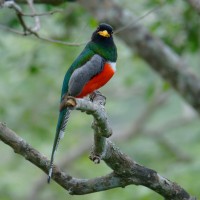 Arizona Monsoon Madness: Birding & Nature in a Season of Wonder!August 2 - 9, 2025
Arizona Monsoon Madness: Birding & Nature in a Season of Wonder!August 2 - 9, 2025 -
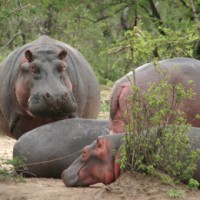 Southern Tanzania: Wildlife & Birding SafariSeptember 7 - 22, 2025, w/Nyerere National Park extension
Southern Tanzania: Wildlife & Birding SafariSeptember 7 - 22, 2025, w/Nyerere National Park extension -
 Best of Belize Crooked Tree, Lamanai & Chan ChichOctober 18 - 26, 2025
Best of Belize Crooked Tree, Lamanai & Chan ChichOctober 18 - 26, 2025 -
 Guyana: Unspoiled WildernessNovember 6 - 18, 2025
Guyana: Unspoiled WildernessNovember 6 - 18, 2025 -
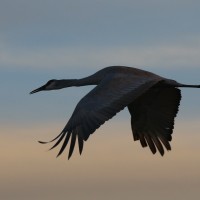 New Mexico Nature & CultureDecember 6 - 13, 2025
New Mexico Nature & CultureDecember 6 - 13, 2025
-
-
Steve Shunk

Steve Shunk started birding in the San Francisco Bay Area in 1989, and he moved to central Oregon’s ‘Woodpecker Wonderland’ in 1997, where 11 woodpecker species breed annually. This phenomenon led to a 20-year obsession studying this charismatic family of birds. Steve founded the region’s woodpecker festival in 2008, and his Peterson Reference Guide to Woodpeckers of North America was published in 2016. He has fed leeches (his own blood) in Malaysian Borneo, and he has watched Spotless Starlings swarming around the Greek ruins of Sicily. Steve’s Alaska adventures have taken him from Ketchikan to Barrow and St. Paul Island. One of his favorite destinations takes him to see ‘eastern’ warblers breeding across the boreal forest of Alberta, but recent adventures have led him to favor the cushion plants and condors of the Peruvian high Andes. Steve speaks at bird festivals across North America, and he returns annually to speak and guide at the Vallarta Bird Festival in far-western Jalisco, Mexico. Steve joined Naturalist Journeys earlier this year, and we are excited to have him on the schedule for 2021 and beyond.
Steve’s work as a field biologist has taken him from the Coast Range of Oregon to California’s Sierra Nevada. Most recently, he conducted point-count and woodpecker surveys for a study in the Central Oregon Cascades. Steve co-founded the East Cascades Bird Conservancy (now East Cascades Audubon), and served as its first president. He also co-founded the Oregon Birding Trails Program and coordinated its flagship project, the Oregon Cascades Birding Trail. When Steve is not traveling the world for tours and lectures, he can be found writing, skiing, hiking, and watching woodpeckers at home in lovely Sisters, Oregon.Other trips with Steve Shunk
-
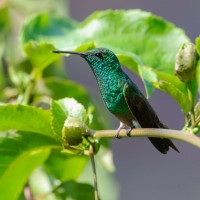 Pacific Mexico & Rancho Primavera FULL - See our November 2025 departure!April 2 - 8, 2025
Pacific Mexico & Rancho Primavera FULL - See our November 2025 departure!April 2 - 8, 2025 -
 Texas Coast & Big Thicket FULL - See South Texas: Birding & Nature tour in March!April 16 - 24, 2025
Texas Coast & Big Thicket FULL - See South Texas: Birding & Nature tour in March!April 16 - 24, 2025 -
 Oregon's Malheur NWR & Woodpecker Wonderland FULL - Check our Oregon's Cascade Mountains!May 16 - 25, 2025
Oregon's Malheur NWR & Woodpecker Wonderland FULL - Check our Oregon's Cascade Mountains!May 16 - 25, 2025 -
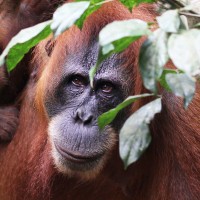 Wild Borneo: Endemic Birding & Nature Only one room left!September 30 - October 14, 2025
Wild Borneo: Endemic Birding & Nature Only one room left!September 30 - October 14, 2025 -
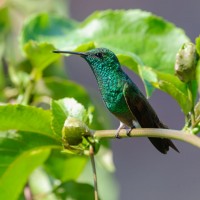 Pacific Mexico & Rancho PrimaveraNovember 24 - 30, 2025
Pacific Mexico & Rancho PrimaveraNovember 24 - 30, 2025 -
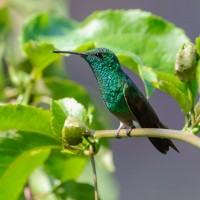 Pacific Mexico & Rancho Primavera: A Winter Escape!Coming January 2026
Pacific Mexico & Rancho Primavera: A Winter Escape!Coming January 2026 -
 Pacific Mexico & Rancho Primavera: A Winter Escape!February 15 - 21, 2026
Pacific Mexico & Rancho Primavera: A Winter Escape!February 15 - 21, 2026
-
Essential Information +
Packing List +
Suggested Reading List +
Useful Links +
Photo credits: Banners: Saguaro National Park, Saguaro National Park Landscape, Chiricahua National Monument, Roadrunner, Black-throated Gray Warbler (Bryan Calk), Northern Beardless-Tyrannulet (Bryan Calk) Thumbnails: Western Tanager (Bryan Calk), Broad-billed Hummingbird (Bryan Calk), Harris' Antelope Squirrel (Bryan Calk), Elegant Trogon (Bryan Calk), Tufted Flycatcher (Bryan Calk), Red-faced Warbler (Bryan Calk), Bullock's Oriole (Bryan Calk), Blue-throated Mountain-gem (Bryan Calk)





















